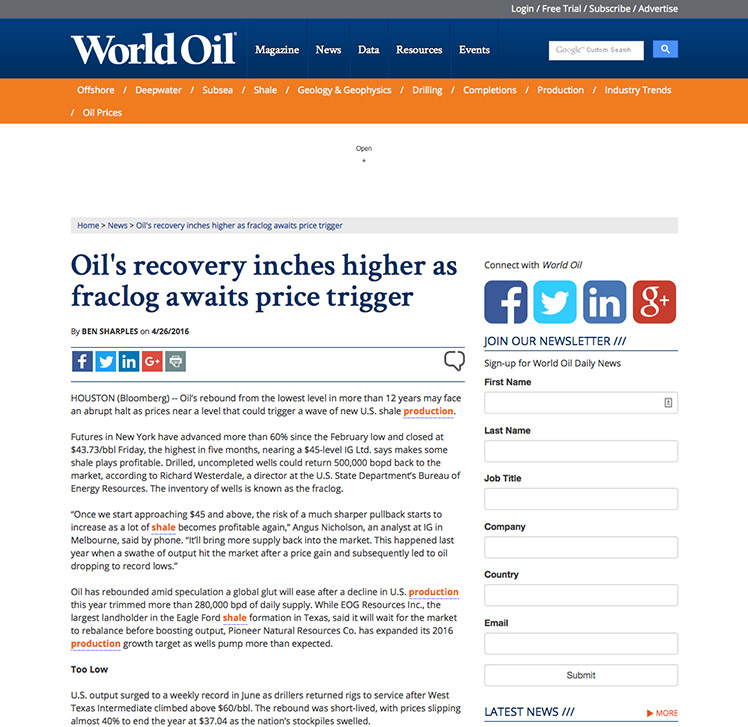USGS: 20 Billion Barrels Of Oil In Wolfcamp Shale Formation lweb.es/f2222 12.05.2016
The Wolfcamp shale in the Texas’ Permian Basin province contains an estimated 20 billion barrels of oil, 16 trillion cubic feet of associated natural gas, and 1.6 billion barrels of natural gas liquids. “The fact that this is the largest assessment of continuous oil we have ever done just goes to show that, even in areas that have produced billions of barrels of oil, there is still the potential to find billions more,” said Walter Guidroz, program coordinator for the U.S.Geological Survey Energy Resources Programme.


